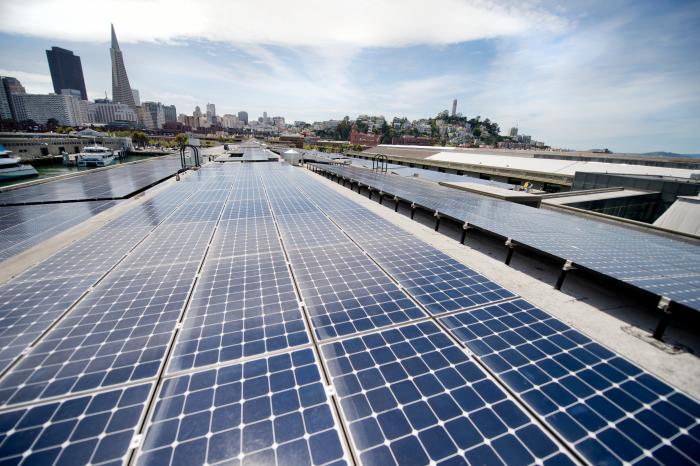
Editors Note: In 2020, SunPower announced the completion of the strategic spin-off of its manufacturing division into a separate business named Maxeon Solar Technologies, Ltd. As a result, SunPower has expanded its offerings to drive future growth. The SunPower Equinox® system now offers multiple panel options, including front- and back-contact panels, all of which are responsibly and rigorously quality tested to provide the best energy solution for your home.
This post was originally published on The Huffington Post, where SunPower CEO Tom Werner is a contributor.
When Royal Dutch Shell CEO Ben van Beurden recently addressed shareholders, he noted that transitioning his company to renewables too quickly “could mean the end of the company.”
“It will take an unprecedented amount of effort to bring about a net zero emissions future,” van Beurden said.
He’s right about the second point but quite wrong about the first. Allow me to explain.
Last week, representatives from more than 20 countries gathered in San Francisco for the Clean Energy Ministerial (CEM7), the first meeting of ministers and delegates since the historic COP21 climate negotiations in Paris late last year. If van Beurden’s thinking represents a natural inclination to hold on to the past, the symbolism and practical purpose of this meeting – held in the backyard of Silicon Valley – represents the future.
The world is already demonstrating tangible evidence of an active shift. One Sunday last month, Germany produced 95 percent of its energy from renewables. Recently, Chile’s president announced that Santiago’s metro system would mostly be powered by solar – the world’s first.
These examples speak to a planet on the cusp of one of the greatest periods of energy innovation since the dawn of electricity in the early 20th century. To van Beurden’s point about unprecedented effort, it’s critical that we now focus on the important steps that build on existing momentum and embrace new technologies and approaches that lay the groundwork for a clean energy future. Looking at our innovative and trailblazing history, this doesn’t feel so daunting or unprecedented.
How to make solar energy successful
Above all, we must keep the price of solar energy low, especially as we see it become increasingly competitive with other energy sources. Since 2011, the average cost of a solar panel has come down 80 percent. Additionally, we’re seeing similar progress on other costs associated with solar – inverters and the panel mounting system, for example. The U.S. decision in late 2015 to extend the longstanding federal solar investment tax credits will support continuing solar price declines. At current prices, many market opportunities exist that didn’t exist three or four years ago. We need to seize them.
Second, we must break down barriers beyond cost. While public policy is playing an important role in this regard, there is still work to do when it comes to ensuring that clean energy has access to the electricity market under fair and reasonable terms. Part of this is due to longstanding institutional relationships among incumbent energy providers. Another part is addressing the legitimate challenge of ensuring that utilities remain fairly compensated for operating energy grids efficiently and reliably, while integrating a steadily increasing share of renewable energy.
We must prioritize regions around the world that will be providing millions of people with ready access to electricity for the first time. In some cases, solar will be a “leapfrog” technology that reduces or even eliminates the need for traditional transmission and distribution grids. Locally-controlled microgrids, for example, will deliver electricity at the scale of a community center, health care facility, or remote village at a lower price than extending the poles-and-wires infrastructure of the traditional utility grid. These are the types of issues that make meetings like CEM7 so important.
Third, we need to form unconventional partnerships. The goal of every energy company today should be to implement creative solutions that ensure customer choice while contributing to grid efficiency, reliability, resilience and security. Recently, a group of leading solar providers and utility companies came together in New York to agree on how best to meet the demand for solar without overwhelming the energy grid. Other states and regions can benefit from similar approaches. (See more in our blog post Collaboration is Key to Our Solar Energy Future.)
Finally, we’ll only succeed if we continually invest in technology and innovation. Solar cell designs are converting sunlight into energy at higher efficiency and lower cost than was thought possible less than a decade ago. "Smart energy," which lets customers efficiently manage their energy use, is quickly catching on. And, improved battery technologies ensure that electricity can be stored for when it is most needed.
With world leaders coming away from their climate discussions in the region that ushered in the digital age, let’s ensure that the next five years pave the way for the next 50. Every company, government and consumer stands to benefit as a result.

